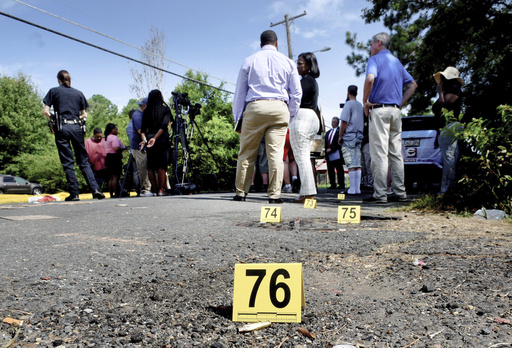Violence and mass shootings typically see an increase during the summer months, particularly around the Fourth of July, historically known as one of the deadliest days of the year. Last year, a string of shootings during the holiday left over a dozen people dead and more than 60 injured. About two years ago, a mass shooting at a Fourth of July parade near Chicago resulted in the deaths of seven individuals. The mother of a 10-year-old boy who was left paralyzed by the attack stated that her family will not be attending this year’s parade, which marks its return since the shooting.
Keely Roberts, who was also wounded in the incident, expressed uncertainty about being able to attend the parade in the future. According to the Gun Violence Archive, the summer months of June, July, and August have reported the highest total number of mass shootings over the past ten years. Conversely, the months from December to March showed the lowest totals. Independence Day topped the list with 58 mass shootings in the last decade, closely followed by July 5.
Criminologist James Alan Fox, who manages a mass killings database in partnership with Northeastern University, attributed the surge in violence during the summer to gatherings, free time, and alcohol consumption. A total of 19 mass killings, 14 of which were shootings resulting in at least four deaths, were recorded in the U.S. in the first half of this year. In 2023, the nation saw the highest number of mass shootings, registering 39 since tracking began.
Researchers suggest that a combination of factors historically contributes to the rise in violence and shootings during the summer months. With schools closed for the summer, families spend more time together, potentially increasing the likelihood of violence, especially when individuals are all in one place. Additionally, idle time among teenagers during the summer presents more opportunities for violence.
Social events such as family gatherings, block parties, and festivals in the summer bring more people together and may escalate issues, especially in the presence of alcohol. While the probability of being a victim of a mass shooting remains low, crowded summer events pose a higher risk of multiple victims should an incident occur.
Studies have shown a link between warm weather and increased aggression, which could contribute to a rise in violent crimes during the summer. Former New York City police officer Jillian Snider noted that escalated temperatures can exacerbate tensions, leading to heightened tempers and potential conflicts. This phenomenon is not limited to summer months, indicating that various factors come into play regarding the increase in violent behavior.



